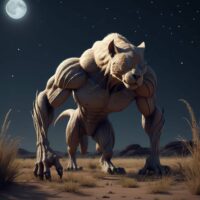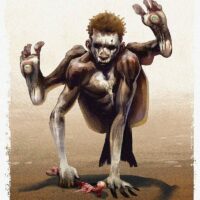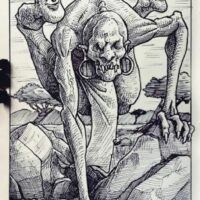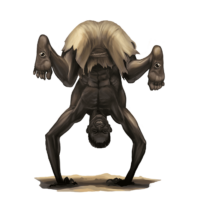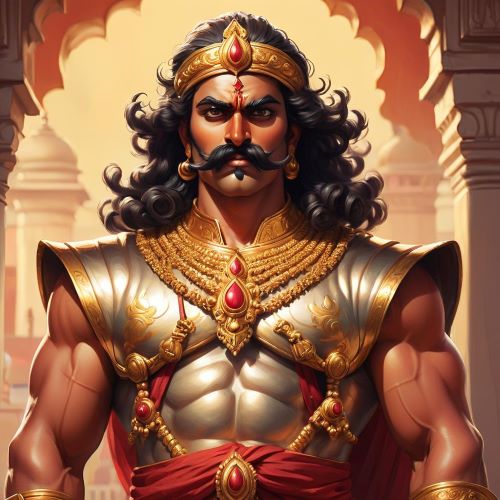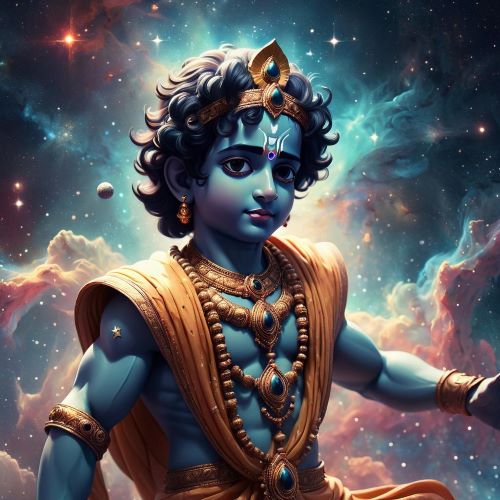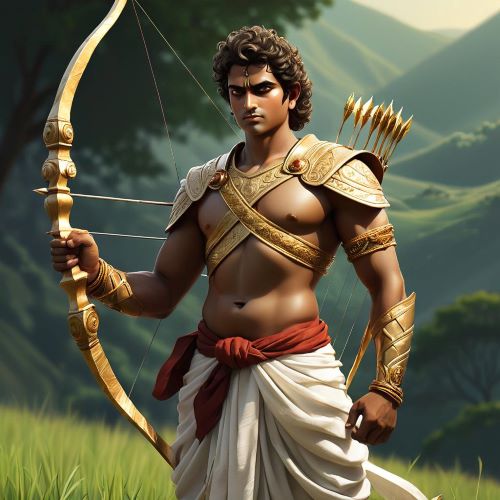Aruna : The Sun’s Charioteer
Listen
At a glance
| Description | |
|---|---|
| Origin | Indian Mythology |
| Classification | Demigods |
| Family Members | Kashyapa (Father), Vinata (Mother), Garuda (Brother) |
| Region | India |
| Associated With | Sun |
Aruna
Introduction
Aruna is a revered figure in Hindu mythology, known as the divine charioteer of Surya, the sun god. He represents the radiant transition between night and day, symbolizing the dawn. As Surya’s charioteer, Aruna is said to guide the solar deity across the heavens each morning, illuminating the world with the reddish glow that marks the rising sun. This celestial function makes Aruna not only a mythological character but also a cosmic force, integral to the cycle of time. His importance is subtly honored in Indian culture, including architectural dedications like the Aruna Stambha—the sacred pillar in front of the Jagannatha Temple in Puri, which commemorates his vital role in the solar procession.
Physical Traits
Though Aruna is not depicted as often as the deities he serves, ancient texts describe him as having a strikingly radiant and reddish appearance, closely resembling the hues of early dawn. His color symbolizes the gentle but powerful light that precedes the sun itself. Unlike Surya, whose brilliance is blinding and majestic, Aruna’s light is calm, softer, and more accessible to human perception. He is often visualized seated at the helm of Surya’s golden chariot, drawn by seven horses that represent both the days of the week and the spectrum of light. His physical form is sometimes said to be incomplete due to his premature birth, an aspect that has led to the epithet “An-uru,” meaning “thighless.” Rather than diminishing him, this trait emphasizes his mystical origin and celestial function. In some interpretations, Aruna is also seen as a being capable of changing his form at will, embodying the fleeting nature of dawn itself.
Family
Aruna’s lineage ties him to some of the most powerful beings in Hindu mythology. He is the son of the sage Kashyapa and Vinata, who is also the mother of Garuda, making Aruna and Garuda brothers. Garuda, the majestic eagle and mount of Vishnu, is celebrated for his strength and speed, while Aruna complements this legacy with his role in guiding Surya. Their mother, Vinata, had a long-standing rivalry with Kadru, the mother of serpents. According to legend, Vinata’s impatience caused Aruna to be born prematurely. In anger over his early birth and his mother’s haste, Aruna cursed her to serve Kadru as a slave. It was Garuda who eventually liberated Vinata, fulfilling his brother’s condition and restoring their mother’s dignity. Some accounts curiously attribute Aruna’s parentage to Kadru, although the majority of sources firmly establish Vinata as his mother. Regardless of the variation, Aruna’s story is rooted in divine lineage, complex relationships, and karmic consequences.
Other names
Aruna is known by a variety of names and epithets that reflect his symbolic and mythological attributes. In Sanskrit literature, he is often called Arun, a name synonymous with the early rays of sunlight. Another name, Rumra, meaning “tawny” or “reddish-brown,” captures the essence of his visual identity during sunrise. He is also called Vinataja, indicating his maternal lineage. The epithet Ushasputra, or “son of dawn,” links him directly to the goddess Ushas, who governs the early morning. Another descriptive title, Surya Rathika, meaning “charioteer of the sun,” emphasizes his cosmic role. Additionally, Aruna is sometimes referred to by the name Kampillaka, a poetic connection to the kamala tree, which is associated with red and orange hues. Each of these names contributes to the layered mythology surrounding Aruna, offering insight into his nature as both person and principle.
Powers and Abilities
Aruna may not wield weapons or command armies like other mythological figures, but his power lies in the realm of celestial balance and cosmic duty. As the charioteer of Surya, he controls the sun’s movement across the sky, which in turn governs the rhythm of time and the cycle of day and night. His presence ensures the steady emergence of daylight, a task of enormous symbolic and practical importance. In metaphysical terms, Aruna embodies the threshold between darkness and illumination, ignorance and knowledge. Some esoteric traditions attribute mystical qualities to Aruna, such as the ability to manipulate light, alter perception, or protect the earth from the full intensity of Surya’s brilliance. In a few modern or literary retellings, Aruna is imagined as a shape-shifter, symbolizing the ever-changing quality of dawn. His existence is a quiet but essential force that maintains equilibrium in the universe.
Modern Day Influence
Although Aruna is not a major deity in contemporary Hindu worship, his influence continues to echo in spiritual and cultural spaces. In the philosophical tradition, the word “Arunodaya” signifies the rise of Aruna and is used to describe spiritual awakening or the beginning of a transformative journey. His name is evoked during the early morning hours of prayer, when clarity of mind and purity of thought are believed to be most attainable. In Indian literature and art, Aruna is occasionally featured in depictions of Surya’s chariot, especially in temple sculptures and manuscripts that highlight solar iconography.
The broader resurgence of interest in Indian mythology in modern media has led to renewed representations of lesser-known figures like Aruna. Writers such as Amish Tripathi and Chitra Banerjee Divakaruni have contributed to a mythological renaissance, where characters from epics and Puranas are revisited with fresh perspectives. Aruna’s symbolic value—representing transition, light, and discipline—makes him a subtle but powerful motif in these narratives. In yoga and wellness communities, dawn remains the preferred time for meditation and practice, and Aruna is sometimes metaphorically acknowledged as the spiritual force behind this sacred hour. His role in aligning cosmic energies with earthly rhythms continues to inspire philosophical thought and artistic expression.
Related Images
Source
Berger, H. (1994, June 1). Hermann Berger (ed.): Mythology in modern Indian literature . (South Asian Digest of Regional Writing, Vol. 12.) vi, 102 pp. Stuttgart: Franz Steiner Verlag, 1992. DM38.
From Gods to superheroes: an analysis of Indian comics through a mythological lens. (2017).
Goudriaan, T., & Gupta, S. (1982, April 1). Hindu Tantric and Śākta Literature . By Teun Goudriaan and Sanjukta Gupta. (A History of Indian Literature, Vol. II, Fasc. 2.) pp. ix, 245. Wiesbaden, Otto Harrassowitz, 1981. DM 98.
Gavām Ayana, the Vedic Era. By R. Shamasastry B.A., Librarian of the Mysore Government Oriental Library. Wesleyan Mission Press, Mysore, 1908. (1909, April 1).
Mythology Meets Modernity: Urban Settings and Mythological Characters in Indian English Literature. (2024, June 14).
Wikipedia contributors. (n.d.). Aruna (Hinduism). Wikipedia. Retrieved August 8, 2025, from https://en.wikipedia.org/wiki/Aruna_%28Hinduism%29
Mani, V. (1975). Story of Aruṇa. Wisdom Library. Retrieved August 8, 2025, from https://www.wisdomlib.org/hinduism/compilation/puranic-encyclopaedia/d/doc241407.html
Apām Napāt. (n.d.). Aruna – The Charioteer of Surya – Indian Mythology. Retrieved August 8, 2025, from https://apam-napat.com/aruna/
Frequently Asked Questions
What is lorem Ipsum?
I am text block. Click edit button to change this text. Lorem ipsum dolor sit amet, consectetur adipiscing elit. Ut elit tellus, luctus nec ullamcorper mattis, pulvinar dapibus leo.
What is lorem Ipsum?
I am text block. Click edit button to change this text. Lorem ipsum dolor sit amet, consectetur adipiscing elit. Ut elit tellus, luctus nec ullamcorper mattis, pulvinar dapibus leo.
What is lorem Ipsum?
I am text block. Click edit button to change this text. Lorem ipsum dolor sit amet, consectetur adipiscing elit. Ut elit tellus, luctus nec ullamcorper mattis, pulvinar dapibus leo.
What is lorem Ipsum?
I am text block. Click edit button to change this text. Lorem ipsum dolor sit amet, consectetur adipiscing elit. Ut elit tellus, luctus nec ullamcorper mattis, pulvinar dapibus leo.
What is lorem Ipsum?
I am text block. Click edit button to change this text. Lorem ipsum dolor sit amet, consectetur adipiscing elit. Ut elit tellus, luctus nec ullamcorper mattis, pulvinar dapibus leo.


